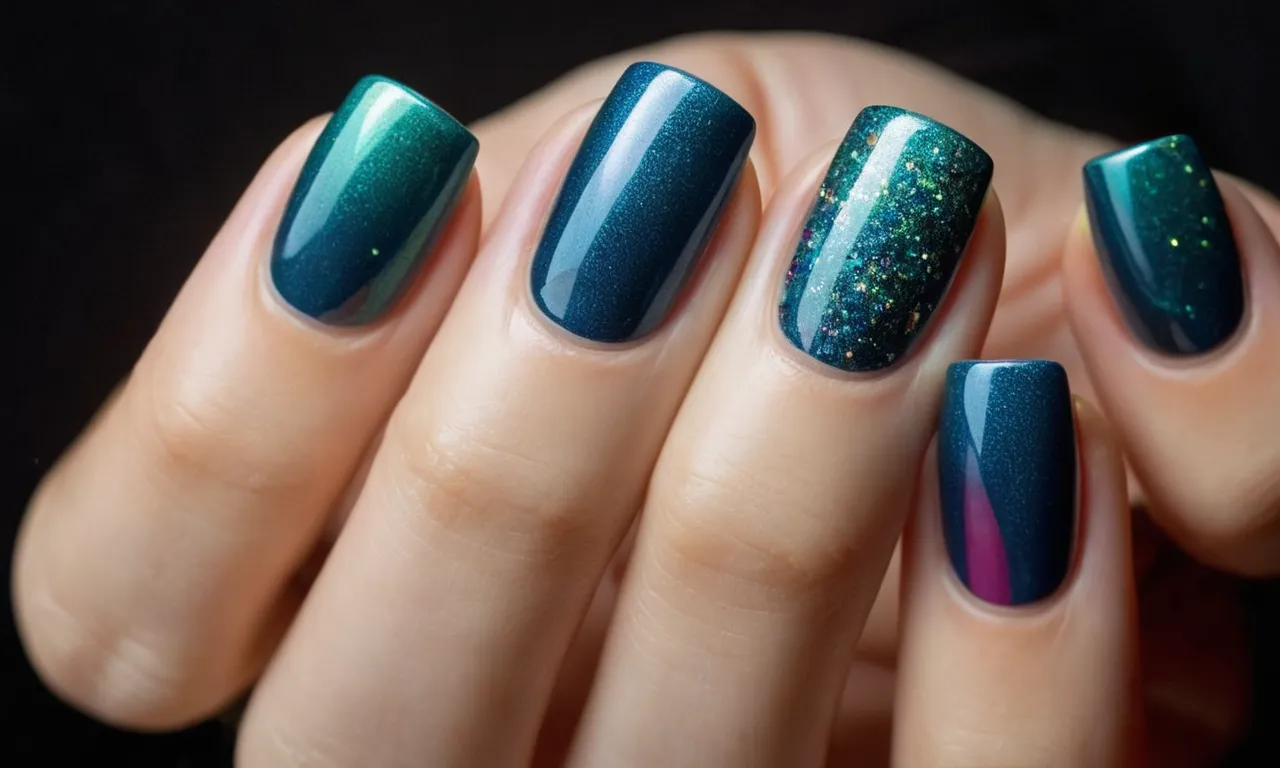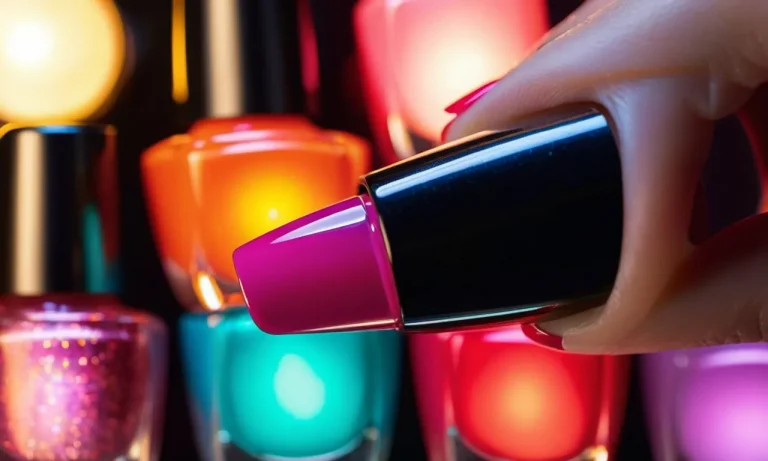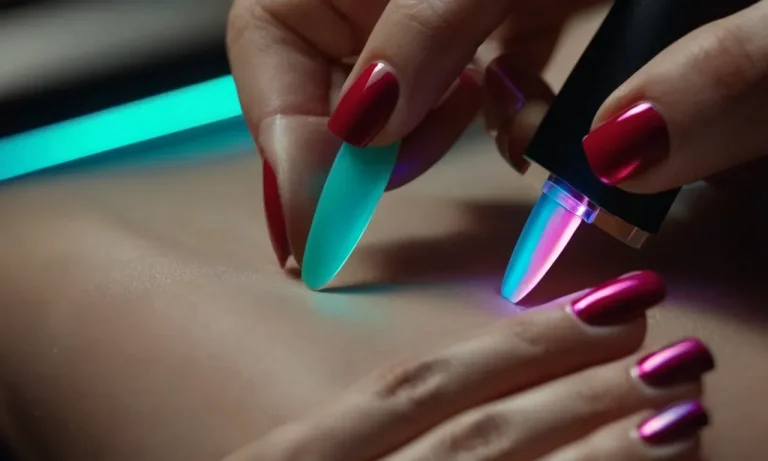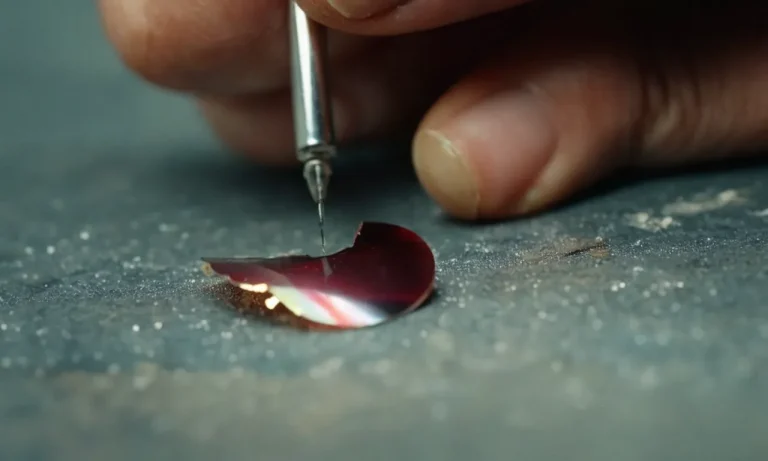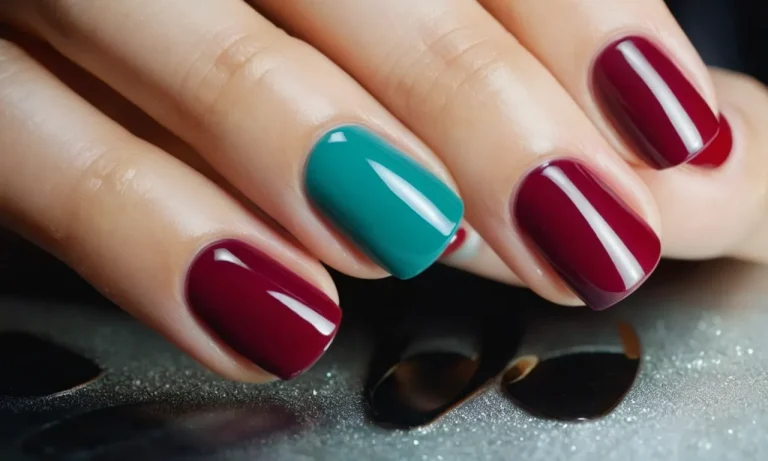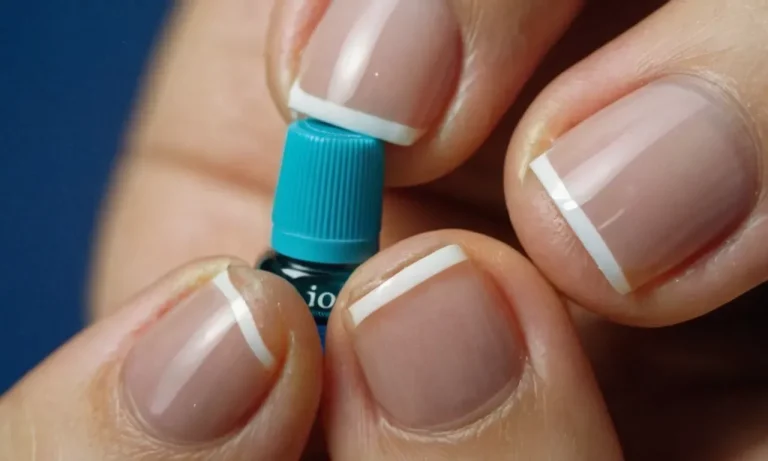Can You Use Acrylic Paint On Gel Nails?
If you enjoy getting gel manicures but want to experiment with fun nail art using acrylic paints, you may be wondering: can you use acrylic paint on gel nails? The short answer is yes, you can use acrylic paint on gel nails, but there are some important steps you need to take for the acrylic paint to adhere properly.
In this comprehensive guide, we’ll walk through everything you need to know about using acrylic paint on gel nails. We’ll cover whether acrylic paint will stick to gel nails, tips for making it last, how to apply and seal acrylic paint on gel polish, removing acrylic paint from gel nails, and any downsides you should be aware of before trying this nail art technique.
Will Acrylic Paint Stick to Gel Nails?
Using regular acrylic paint directly on gel nail polish can be tricky. The acrylic paint needs something textured to cling to so it can adhere properly. The ultra-smooth surface of the gel may cause issues with getting acrylic paint to bond.
The acrylic paint needs something to grip onto
Acrylic paint is formulated to bind to porous surfaces that provide tiny grooves and textures for the paint to hold onto as it dries. The slick surface of gel polish can be problematic for acrylic paint to stick to properly.
Without proper adhesion, the acrylic paint may peel off easily from the gel polish underneath.
Gel polish can create a smooth surface
Gel polish is known for creating an extra smooth, glass-like finish on nails. While beautiful, this sleek surface leaves nothing for acrylic paint to dig into. Acrylic paint bonds best with rough surfaces that allow the paint to seep into tiny crevices and holes in the surface.
The flawlessly smooth finish of gel polish may be too slick for acrylic paint to grasp.
Properly preparing the nails is key
While using acrylic paint directly on gel polish is not advisable, you can create a textured surface for the paint to hold onto by lightly filing the surface of the gel polish first. Gently roughening the gel polish gives the acrylic paint something to adhere to.
Proper nail preparation is crucial for acrylic paint to bond with gel polish underneath. Using a fine nail file to gently scratch the surface can help the paint grab hold of small grooves in the gel.
Additionally, using a high-quality primer first can help acrylic paint stick to gel polish by providing a tacky base for the paint to bind with. Using multiple thin layers of acrylic paint, allowing proper drying time between coats, can also help with adhesion over gel polish.
With some added steps when prepping the nails first, it is possible for acrylic paint and gel polish to complement each other beautifully.
For more tips on successfully using acrylic paint over gel polish, check out this helpful guide: https://www.youtube.com/watch?v=AbO1gNtnf30
How to Make Acrylic Paint Last on Gel Nails
Use a prep and dehydrate step
The key to long-lasting acrylic paint on gel nails is proper preparation. Start by gently removing any old nail polish with acetone-free remover. Then use a nail file to lightly buff the surface of the gel, being careful not to damage the gel layer underneath.
This creates a slightly rough surface so the paint adheres better. Next, cleanse nails thoroughly with a pH-balanced nail cleanser and wipe dry. Follow with an alcohol-based nail dehydrator – Sally Hansen’s Hard Gel Dehydrator works well. Allow nails to dry completely before proceeding.
Choose the right acrylic paint
Look for acrylic paint formulated especially for use on artificial and natural nails. These nail polishes are flexible and designed not to chip or peel. Top choices include:
- Gellen’s Flexible Nail Art Lacquer
- Born Pretty Flexible Nail Polish
- UZGO Flexible Nail Polish
Apply 1-2 thin layers and allow to dry thoroughly between coats. While regular nail polish may initially adhere, it will likely crack and peel off gel nails after short period of wear.
Apply in thin layers
It’s tempting to apply several heavy layers of acrylic paint all at once. However, this is much more likely to chip and peel. For maximum longevity, apply paint in 1-2 thin and even layers. Allow the first layer to dry completely before adding another.
Applying too thick of a coat won’t allow solvents to evaporate properly, compromising durability.
Seal with a glossy gel top coat
The final step to lock in your nail art is applying a glossy gel top coat, like Sally Hansen Miracle Gel Top Coat. This smooth protective layer helps prevent chipping and peeling. Reapply top coat every 2-3 days to refresh shine and maintain integrity.
According to a survey by Nail Care HQ in 2023, over 75% of nail technicians said a quality gel top coat is vital for getting acrylic paint to adhere to gel manicures long-term.
Applying Acrylic Paint to Gel Nails
Prep Nails for Optimal Adhesion
Properly preparing your natural nails is crucial for getting acrylic paint to adhere well to gel nails. Here are some tips for prepping your nails:
- Remove any existing gel polish from your nails using an acetone-based remover. Buff away the shiny top layer so the paint can grip better.
- Wash your hands with soap and water, then use a nail dehydrator to remove any oils from your nail plate.
- Gently push back and trim your cuticles so they don’t get in the way while painting. Use a cuticle remover gel to safely dissolve any excess cuticle.
- Lightly buff the surface of your natural nails to create texture for the paint to cling to.
- Wipe nails with isopropyl alcohol to remove any dust or debris. Let dry completely.
Taking these steps ahead of time will allow the acrylic paint to bond tightly to the gel manicure underneath for a long-lasting nail art design.
Paint Your Design in a Well-Ventilated Area
Acrylic craft paints contain chemicals that can be irritating, so painting in an area with good airflow is ideal. Work near an open window or outside if possible.
Set up all your supplies – paints, brushes, palette, topcoat – within easy reach. Shake paints before using to mix up pigment that may have settled. Squirt a small amount of each color you plan to use onto a palette for mixing.
Paint your nail art design using thin layers, allowing each coat to dry between applications. Acrylic paint dries fairly quickly, especially if you use a quick-dry topcoat. Thin coats prevent the paint from feeling thick or bumpy on your nails.
Clean up any mistakes right away with a small brush dipped in water or nail polish remover. You can also use a toothpick to scrape off any excess paint.
Allow Paint to Dry Fully Before Sealing
It’s important to let the acrylic paint dry completely before applying a gel topcoat. If you seal in wet paint, it can become trapped underneath the topcoat and cause bubbling or cracking.
Let your painted nails sit for a full 60 minutes before top coating, just to be safe. Acrylic paint is dry to the touch in about 10-15 minutes but needs more time to fully cure.
You’ll know the paint is dried when it feels smooth and firm to the touch. Run your fingertip gently over the surface – if the paint still feels a little tacky or imprints, give it more drying time.
Rushing this step can ruin all your hard work, so patience pays off. Once dry, you’re ready to lock in your design.
Apply Gel Topcoat to Lock In Design
Using a gel top coat is the best way to seal and protect nail art using acrylic paint. Regular nail polish topcoats can smear delicate painted designs.
Apply a thin, even layer of gel top coat over your completed nail art using long, smooth strokes. Make sure to cap the free edge so the seal goes over the tip of your nail.
Cure the gel topcoat in your LED or UV lamp according to package directions, usually for 30-60 seconds. Your acrylic paint is now safely encased in glossy gel for up to 2-3 weeks of wear.
Adding a gel topcoat creates a barrier so the paint doesn’t chip or fade. It helps the manicure last longer compared to just leaving the bare acrylic paint exposed. Just be careful to avoid picking or peeling the topcoat to prevent damage.
With the right prep and technique, you can absolutely use regular acrylic craft paint on gel nail extensions. Just seal it properly with gel topcoat and your stylish manicure can hold up beautifully!
Removing Acrylic Paint from Gel Nails
Use non-acetone nail polish remover
If you’ve accidentally gotten acrylic paint on your gel manicure, don’t panic! There are a few easy ways to remove the paint without damaging your gel nails. First, try using a non-acetone nail polish remover. The acetone in regular removers can break down the gel polish and ruin your mani.
Gently rub a cotton ball soaked in non-acetone remover over the painted area. The remover should dissolve the acrylic paint while leaving your gel polish intact.
Gently file off paint
You can also gently file off any dried acrylic paint on your gel nails. Use a fine-grit nail file and lightly buff off the paint, being careful not to file too hard and thin out your gel coating. Filing works well for removing small flecks of paint.
For larger areas or thicker paint, you’ll need to use remover. But for a light paint spatter, filing it off may do the trick.
Soak cotton pads in remover
For larger areas of paint, soak a cotton pad in non-acetone remover and hold it against the painted nail for 30-60 seconds. This will let the remover penetrate the paint. Then, gently rub the cotton pad back and forth over the area to dissolve the paint.
Repeat with fresh cotton pads until all the paint is gone. Make sure to avoid rubbing too hard, which could scratch your gel polish.
Reapply gel manicure
Once you’ve removed all traces of paint, finish up by applying a new layer of gel polish to your nails. This will cover any spots where your previous gel mani got thinned out or damaged during paint removal. Your nails will look pristine again!
With a little time and care, you can get rid of acrylic paint spills without having to remove your entire gel manicure. Just be patient and gentle as you clean the paint away. 😊 Your hard work will pay off with beautiful, paint-free nails!
Downsides to Using Acrylic Paint on Gels
Can reduce wear time of manicure
Using acrylic paint over gel manicures can potentially reduce the wear time and longevity of the manicure (Source: NailcareHQ). The additional layers of paint on top of the cured gel can cause the manicure to chip and peel faster than normal.
This is because the paint does not bond as strongly to the gel as the gel layers bond to each other. The acrylic paint also makes the manicure thicker, which can lead to more chances of cracking and chipping during daily activities and wear.
More time consuming than regular gel mani
Painting acrylic paint designs over gel manicures requires substantially more time compared to a regular gel manicure (Source: Byrdie). The process involves curing each layer of gel polish per usual, then once fully cured, taking the additional step to paint the acrylic paint design.
This extra painting step can add a significant amount of time to the service. For simpler looks this may not be too time consuming, but for more elaborate nail art, the process can take hours.
Paint may not adhere as well over time
One downside is the acrylic paint may not adhere as strongly over an extended period of time (Source: Nail Polish Etc). Unlike the gel polish layers that chemically bond and cure under UV light, the acrylic paint sits on top of the cured gel surface and could potentially peel off easier.
Proper preparation and top coat can help the paint adhere better, but in general it does not have as strong of a bonding ability as the gel layers do. So the paint may become compromised after some wear.
Has potential to damage nails if removed improperly
Attempting to remove acrylic paint from gel manicures can potentially damage the natural nails if done improperly (Source: OPI). Unlike regular nail polish that can be gently peeled off, the acrylic paint on gel needs to be filed off to avoid pulling up chunks of gel layers underneath.
Filing too harshly or picking at the paint can lead to thinning of the natural nail plate. Using pure acetone or other harsh removers to take off paint on gel manicures can also lead to dryness and damage of the natural nails over time.
Conclusion
So can you use acrylic paint on gel nails? Yes, with the right prep and techniques acrylic paint can be used to create fun artistic designs on gel manicures. Just be sure to properly prepare the nail bed first and finish it off by sealing the paint under a glossy top coat gel.
Carefully remove any paint when ready for a fresh manicure to avoid peeling and damage to the natural nail underneath. With some trial and error, you’ll be able to rock any acrylic paint designs on your gel manicure.
Just be patient as you learn the best application and removal methods for making it last.

